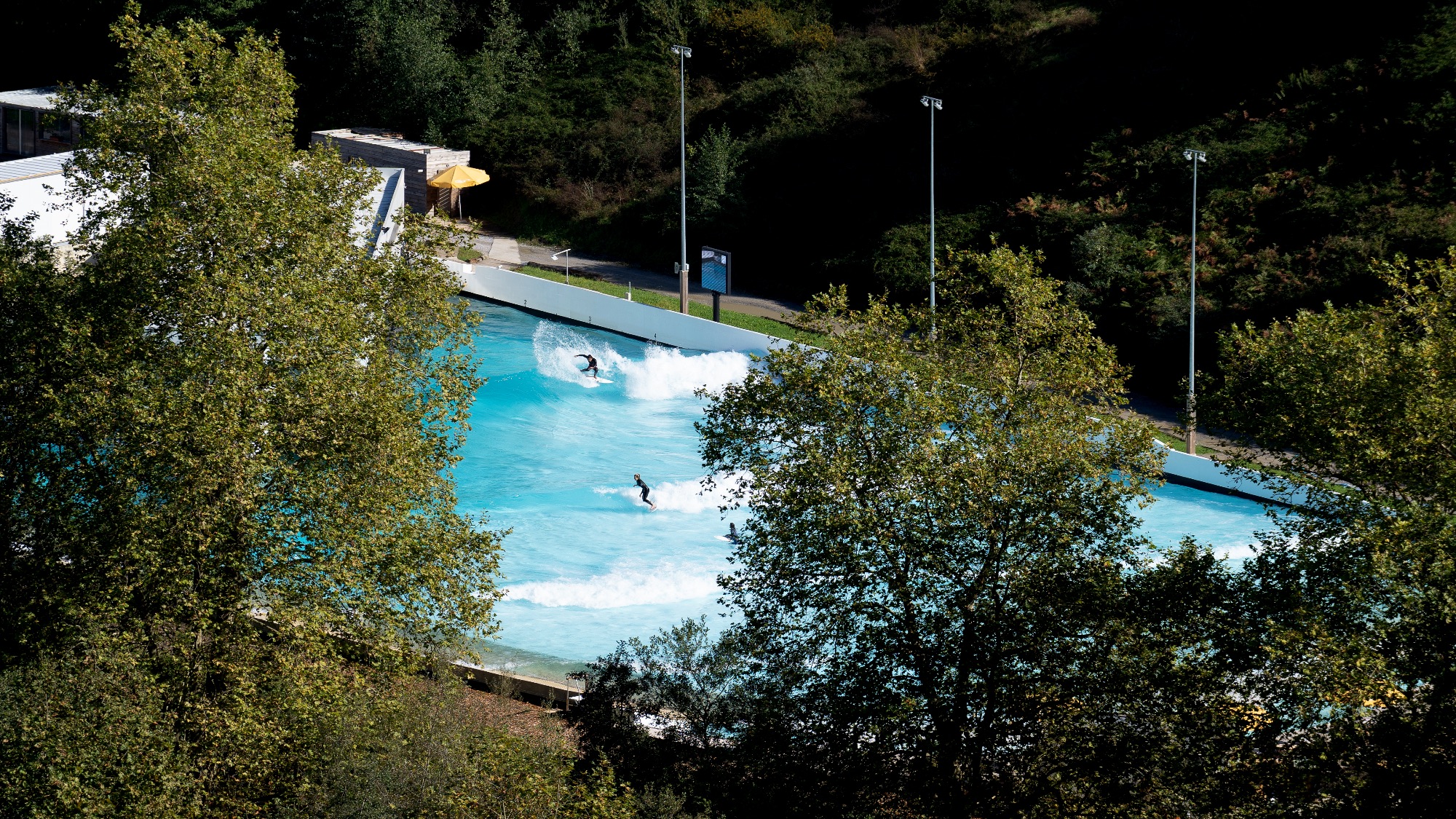How the Wavegarden Cove works

Wavegarden developed the Cove system shortly after their groundbreaking Lagoon design. Where the Lagoon had limitations in wave count and variety, the Cove resolved these issues critical to a profitable surf park. The system is a diamond-shaped pool with a customizable pier or footbridge running through the center. The top end of the pier houses the machinery that pushes out waves through a series of levers encased in modules. The levers swing in one direction to push out a wave on one side of the pool, then carry that inertia back to the other side of the module, pushing out a wave on the other side of the pool – which makes for an energy-efficient system. As the wave refracts and moves along the wall it gets further enhancement from the other modules.
In broad strokes, the number of modules determines wave length and power.
Wavegarden Module Count:
The Wavegarden test facility in the Basque Country of Spain has 28 modules and provides a short right-hander, while The Wave in Bristol boasts 40 modules. Melbourne and Alaia Bay have 46 modules and Brazil’s Praia da Grama has 52. The super wave pool in South Korea at Wave Park has 56 modules. Wavegarden refused to provide water capacity and size of the modules.
But we do know that each additional module helps push and refine the wave according to the engineer’s or programmer’s desired end-product. Famous settings include the Beast tube riding specialty wave and the extremely popular Turns waves. The Cove produces surf in the 2-to-7 foot range as only rights on one side of the pier and only lefts on the other side. There is no peak setting with split rights and lefts.
One of the first to market, Wavegarden Cove systems are in place at some of the world’s most popular surf parks including Wave Park South Korea, The Wave in Bristol, Alaia Bay in Switzerland and Urbnsurf in Melbourne. At the time of this writing, the company is developing roughly 30 additional projects globally.
Related Coverage
